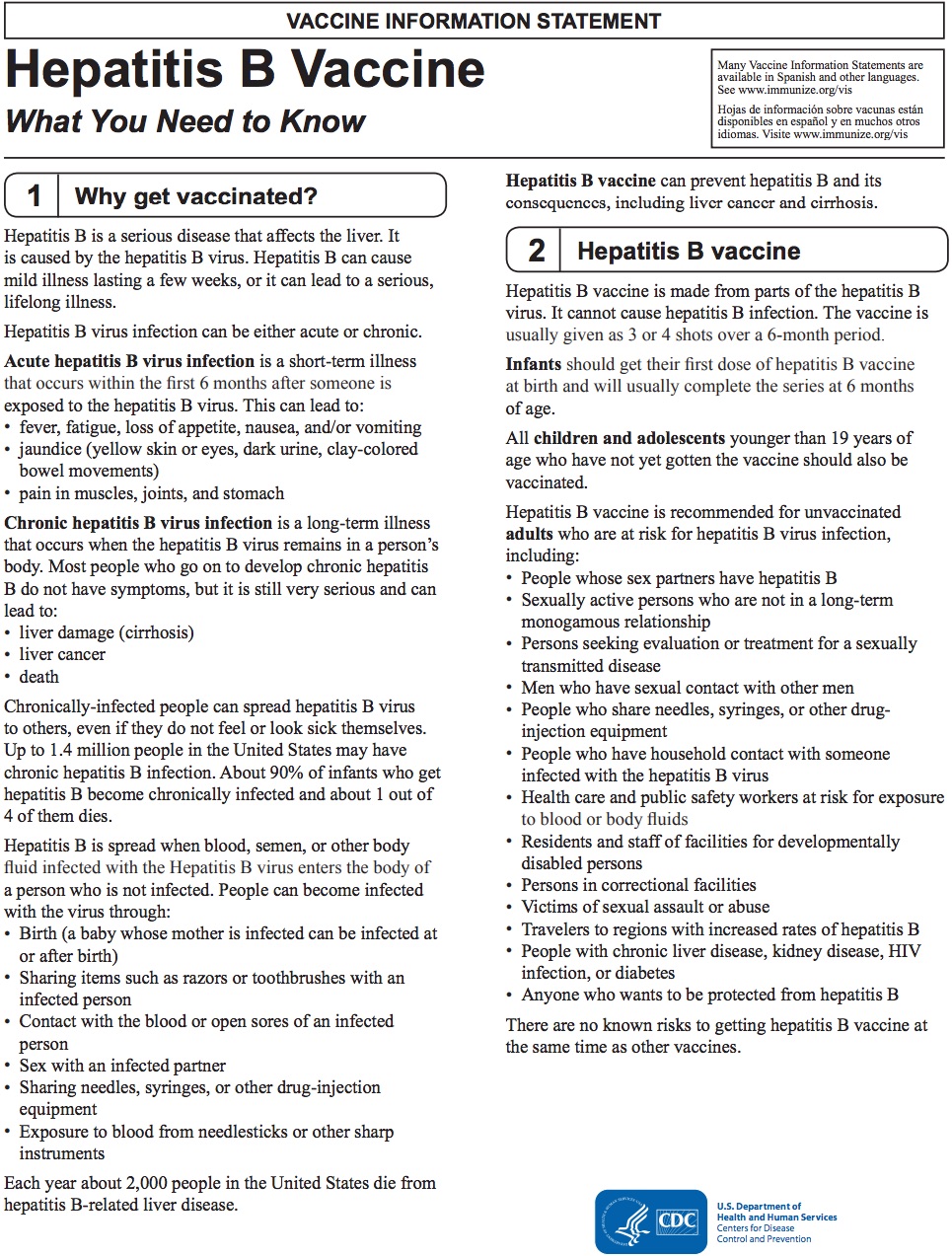![]() Important Information
Important Information
Hep B Vaccination
University employees with potential for any exposure to human or non-human primate blood, body fluids or any other substances covered by the Bloodborne Pathogens program (see Chapter 6) as a part of their work at Stanford University will be offered the Hepatitis B vaccine at no cost to the employee.
Hepatitis B is a serious disease that affects the liver and is caused by the hepatitis B virus. Hepatitis B can cause mild illness lasting a few weeks, or it can lead to a serious, lifelong illness. Hepatitis B virus infection be either acute or chronic. Acute hepatitis B virus infection is a short-term illness that occurs within the first 6 months after someone is exposed to the hepatitis B virus. This can lead to fever, fatigue, loss of appetite, nausea and/or vomiting, jaundice (yellow skin or eyes, dark urine, clay-colored bowel movements), or pain in muscles, joints and stomach. Chronic hepatitis B virus infection is a long-term illness that occurs when the hepatitis B virus remains in a person’s body. Most people who go on to develop chronic hepatitis B do not have symptoms, but it is still very serious and can lead to liver damage (cirrhosis), liver cancer, or death. Chronically-infected people can spread hepatitis B virus to others, even if they do not feel or look sick themselves. (Figure 1)
Hepatitis B is spread when blood, semen, or other body fluid infected with the Hepatitis B virus enters the body of a person who is not infected. People can become infected with the virus through: birth (a baby whose mother is infected can be infected at or after birth), sharing items such as razors or toothbrushes with an infected person, contact with the blood or open sores of an infected person, sex with an infected partner, sharing needles, syringes, or other drug-injection equipment, or exposure to blood from needle sticks or other sharp instruments. Occupational exposure can occur through a puncture or cut with a contaminated sharp object, blood or OPIM contact with broken skin, or blood or OPIM splash to the mucous membranes (eyes, nose, mouth).

Hepatitis B vaccination can prevent hepatitis B and its consequences, including liver cancer and cirrhosis. Although Hepatitis B vaccine is made
from parts of the hepatitis B virus, it cannot cause hepatitis B infection. The vaccine is usually given as 3 or 4 shots over a 6-month period (Figure 2).
While Stanford University encourages employees to be vaccinated, accepting vaccination is not a condition of employment. Employees and students (including post-doctoral fellows, graduate students, and medical students) that are offered the vaccine are required to sign a declaration form indicating they have been given the opportunity to receive the vaccination. This vaccine declaration form is available by request from the SUOHC and should be returned to the SUOHC once completed. If researchers or employees wish to receive the vaccine, they should complete the Hepatitis B vaccination declaration form (https://stanford.io/2kFQfrb).
For additional information regarding the Hepatitis B vaccine and occupational exposure to the virus, please visit the EH&S Website page (https://stanford.io/2B24PEn) or contact the SUOHC by calling 650-725-5308.
